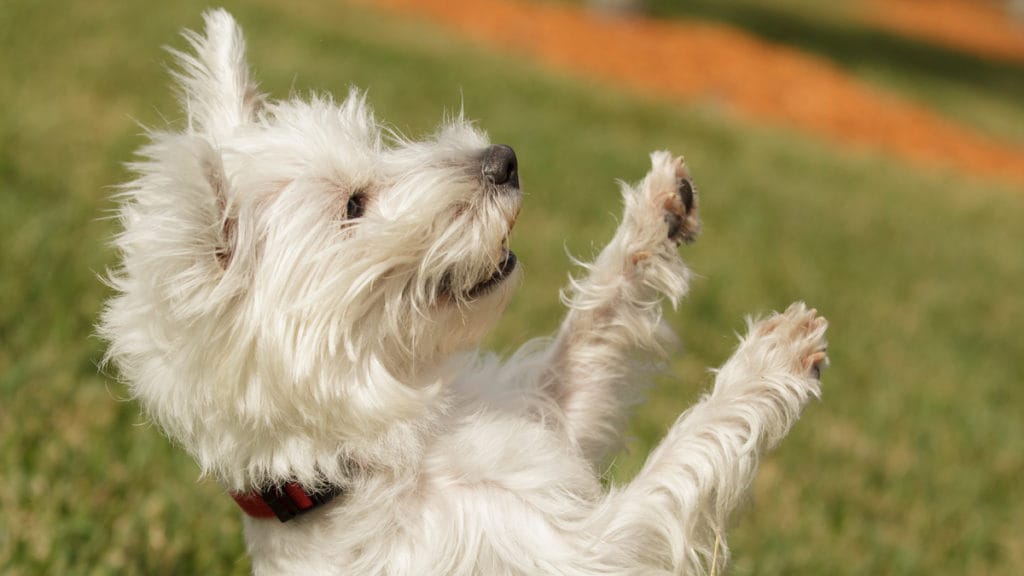It’s likely you’ve heard the old adage, “you can’t teach an old dog new tricks,” but is there actually any truth behind the saying? Learn how to train your dog with these expert dog training tips!
“It really depends on the dog, what you’re trying to teach them, and how much time and patience the owner has,” says Annie Angell, CPDT-KA and co-owner of My Two Dogs, Inc. “Dogs are a bit like people—if there is motivation to do something, they will do it, as long as there is something in it for them.”
If you’ve adopted an older dog and you’re interested in learning how to train your dog—at least for some of the basics—Angell suggests that you start by being reasonable with what you want to teach. “If I thought a trick would be physically uncomfortable for a dog, then I wouldn’t teach it,” she said. “For example, if you want to teach a 12-year-old overweight Lab mix how to jump through a hoop, my advice would be to skip that and teach him instead how to step inside the hoop and sit, if the dog has no problem with his hips.”
If you’re reasonable with your dog training expectations, Angell says it’s relatively easy to teach an older dog a new trick like find, give paw, touch and pick it (where your dog picks which hand the treat is in). “Just because they are older doesn’t mean they don’t want to have fun or learn something new; it just may take a little more practice,” Angell said.
As with a pooch of any age, picking the right motivation is key in the initial steps of learning how to train your dog. Dog treats like Merrick Power Bites Real Texas Beef Recipe Grain-Free Soft & Chewy Dog Treats and Wellness Petite Treats Soft Mini-Bites with Lamb, Apples & Cinnamon Grain-Free Dog Treats are great options. Other dog training products like Starmark Pro-Training Clicker Dog Training Aid or Four Paws Cotton Web Training Dog Lead might also help.
Once you’ve discovered a treat to help with your dog training, basic commands can all be learned pretty easily, but it’s the behavioral modifications that many find a bit trickier with older dogs—things like bark control, separation anxiety and dealing with other pets in the house.
While all three of those behavioral issues would likely require larger help from a trainer—and can get worse over time—Angell does offer some suggestions to get started.
- For barking: Wait for your dog to bark, and then during a quiet pause between barking, say “quiet,” tell your dog “good boy” and reward the quiet. “I usually tell people to allow the dog about two barks before you say quiet,” Angell added.
- For separation anxiety: From the moment you bring your new dog home, you should have a plan in place for the dog to be alone. “I always suggest adopting a new dog when you can take some time off from work and start leaving the dog home alone for small amounts of time,” says Angell.
- For other pets: To start, never leave new pets home alone, cautions Angell. “You need to make sure that everyone is safe, no matter what species,” she said. One thing you can work on is teaching the new dog how to come when called. “This way, when your dog starts showing interest in the other pet, you can call your dog’s name and then reward her for coming to you instead,” said Angell. “You can also teach a ‘leave it’ command.”
Dog training at any age doesn’t need to be stressful. Just follow the above dog training tips, stay patient and take your time. Before you know it, your older pet will be behaving just as well as any younger dog.
Share:













